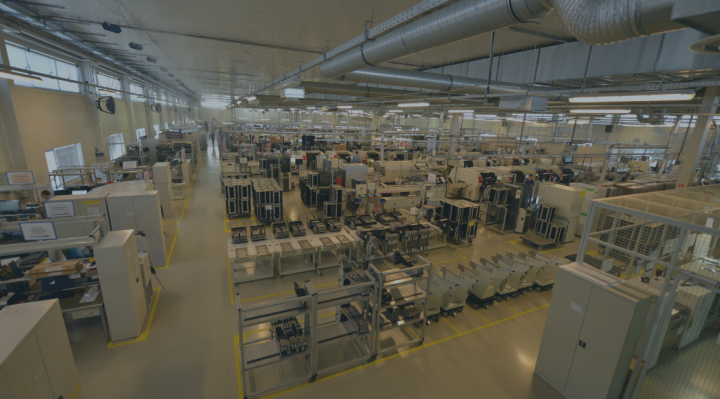There are clear signals that electronics manufacturers are leaving China. Although China has dominated global manufacturing over the past forty years, there are a number of factors that motivate manufacturers to start looking for new sites.
The rise of electronics manufacturing services in China
China’s success was thanks to President Deng Xiaoping's economic reform, bringing with it the concept of the free market to China in the late 1970s. By combining extremely low labour costs (additionally subsidised by the government), low taxes and customs duties, competitive currency procedures, a laid-back approach to regulatory compliance, a huge market of low-cost labour and a rapidly growing business ecosystem, production in China became so profitable that manufacturers turned a blind eye to quality issues, long shipping times, language barriers or even annual delays during the Lunar New Year.
Add access to a fast growing number of consumers from Southeast Asia and the global transformation, with phones, tablets and computers mushrooming in homes and workplaces, and it was clear why China became a key global business hub. On top of that, China was able to quickly adjust its production capacity and grow specialised industries, such as electronics and PCB manufacturing.
This why whole cities such as Shenzhen were built in China – for the sole purpose of rapid production of electronics. And that is also why China overtook the US in 2011 as the world’s largest producer, with a GDP growth of 40%.
Problems of China's EMS
However, Chinese manufacturing faced a number of challenges in recent years, such as rising labour costs and tariffs, Covid-19, currency fluctuations and more regulatory burdens. In addition, the US-China trade war, the Taiwan dispute and increasingly tense relations between liberal democracies and Beijing marred by accusations of intellectual property theft1, human rights violations in Xinjiang, or destruction of Hong Kong’s autonomy, left the “factory of the world” facing many problems. As a result, this led to a mass exodus of manufacturers from China, marking the beginning of the decline of China’s dominant status.
The research firm Gartner reported that one third of manufacturers planned or are planning to move at least a part of their production out of China by 2023. The exodus has also accelerated due to the coronavirus pandemic, marked by declining sales, supply chain disruptions and significant cost hikes in supply chains.
Electronic Manufacturing business moving out of China
According to the mentioned report, a quarter of manufacturers have already moved production closer to customers, despite rising costs and greater overall complexity of operations. This move dispels worriers about the supply chain’s reliance on a single location. Especially in the face of scarcity, geopolitical pressures and rapidly evolving markets, the location of production is key.
Why move electronics production to Europe?
All these considerations raise an extremely intriguing question: if manufacturers leave China, where will they go? In a situation where, for instance, the US industry is struggling with labour costs and qualifications?
Europe seems a natural destination for a number of reasons:
- Predictable supply chain, meaning not only certainty of supplies, but also greater speed of delivery and fewer delays due to the close location of production sites.
Products do not need to swim in containers or fly by plane any more, but can be delivered, by road transport, which takes up to seven days in Europe. - Lower transport costs. With remote production sites, transport costs hike sharply, becoming a major cost factor and problematic even in the case of large products.
- Keeping high standards is natural with production procedures implemented by European EMS providers.
- Stable political situation. Faced with the coronavirus, China adopted a zero-tolerance policy and shut down its economy and factories overnight without warning in a heavy-handed move. This is one of the reasons why manufacturing in China has become so risky.
One could argue that the manufacturing culture in Europe is more “civilised”, because, as the last two years have shown, European firms have been doing their best to maintain supply chains despite the epidemic, and this in a situation where entire regions of the continent were closed down and there were labour shortages. - No customs duties within the EU. This is particularly relevant in view of the apparent overall increase in costs recently.
However, one should keep in mind that China itself and the countries of Southeast Asia have massive consumer numbers. This is why it makes sense to outsource production in China for those markets. But if production is targeted at European consumers, maintaining production in China has more cons than pros.
Theft of intellectual property in China?
Despite the recent changes, the Chinese intellectual property system is still a major challenge for businesses, including electronics manufacturers. All the more so as little information is available on the issues with intellectual property protection, which many firms have experienced and which have been the cause of the growing tension and trade war between China and the USA.
Consistent legislation is a major advantage of producing in the EU. While one may complain about EU bureaucracy, Europe provides legal security, which is particularly relevant not only when it comes to protecting intellectual property but also in the case of disagreements between business partners.
Why Poland?
Poland is a highly attractive destination for production. In addition to having a large internal market, it still offers relatively lower labour costs and a highly trained workforce.
On top of that:
- Poland is situated in the very centre of Europe, making it possible to locate production close to Western economies, such as Germany, and end consumers. This not only facilitates quick delivery to customers, but also brings major logistics savings.
- Poland is a large, production-focused country with a fleshed out sub-supplier base.
- Although production prices in Poland are currently slightly higher than in China, it is important to realise that wages for Chinese professionals are growing rapidly.
To learn more about the advantages of using Polish EMS providers, read our text Poland – your ideal destination for finding an EMS partner.
Conclusion
More and more European companies from the electronics and other industries are moving their production to Europe. According to the global investment report of UNCTAD 2020 (United Nations Conference on Trade and Development), returning to Europe is the best option for high-tech firms because of the deeply integrated global supply chain and production automation.
Poland clearly stands out among European countries, as it can offer relatively low labour and production costs, while providing a highly qualified workforce and a modern work culture. All this helps meet manufacturers’ high requirements.






